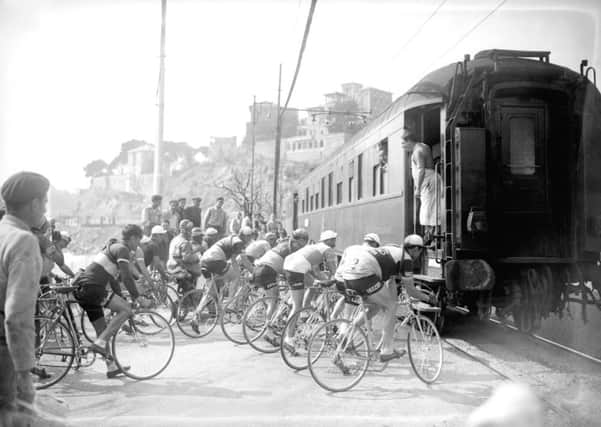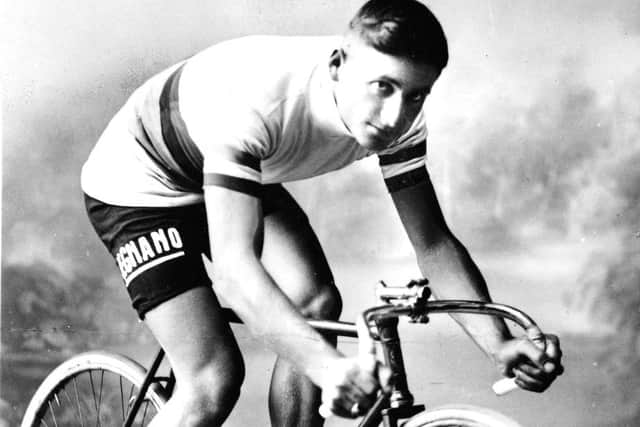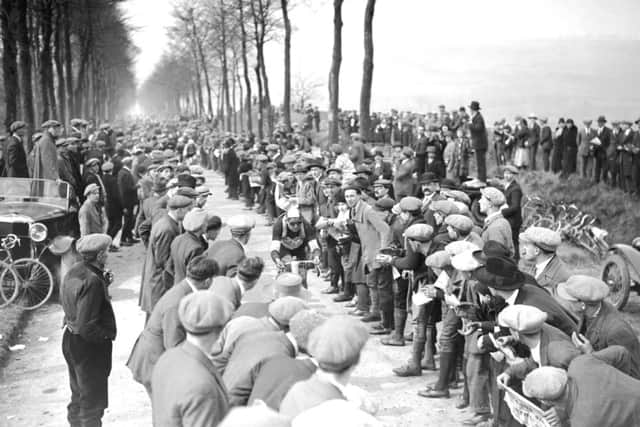The ride of their lives


IF there is one competitor and one race that perhaps best sums up the dogged determination of the world’s best cyclists, it is perhaps Bernard Hinault and the 1980 La Doyenne event.
La Doyenne is the oldest of five one day races which make up cycling’s prestigious Monuments series. Even when the weather is fair, the race, with its long, steep climbs is a tough one. In 1980 it was even harder.
Advertisement
Hide AdAdvertisement
Hide AdJust a few minutes after 174 riders crossed the Belgian start line, snow began to fall and the temperature plummeted. The race, which winds its way 162 miles from Liège to Bastogne and back again, was founded in 1892 and every year it had claimed a number of victims. However, 1980 was to be the most gruelling yet. After barely an hour, dozens of riders had abandoned their bikes in the snow, leaving a 60-strong peloton with Hinault at its head.


“He said to his team mate that if it was still snowing when they reached the feed station he was going to stop,” says Ilkley author and cycling journalist Peter Cossins who has written a new book celebrating the sport’s greatest one day races. “The sun made a brief appearance and reckoning the worst of the day had passed, Hinault pressed on.
“However, while the snow may have stopped, it remained icy cold, yet he kept going and pulled away from the rest of the pack. When he finally crossed the finishing line in first position he barely responded to the cheers of some of the fans. At the time some said he was angered by the ordeal the riders had been put through, but Hinault later said that he didn’t raise his arms in celebration because he was completely done and feared falling flat on his face.
“When he got back to his hotel, his team mate had a hot bath waiting for him. Instead of climbing in, he emptied it, refilled it with cold water and stepped in. He knew he had to thaw himself out gradually. It took three weeks for the feeling to fully return to his hands and even now he says he still feels the after effects of that race when temperatures drop.”
Advertisement
Hide AdAdvertisement
Hide AdWhile the Tour de France may cycling’s premier event, it’s these five one day races which have long fascinated Scarborough-born Peter and, with the Grand Départ coming to Yorkshire this summer, he is hoping the increased interest in the sport will allow him to share his passion with a much wider audience.


“Like a lot of people, my way into the sport was through the Tour de France,” he says. “But from quite early on it was the single day races which really captured my imagination. The Tour de France takes three weeks and you often get days when there’s nothing much of interest going on. Also whatever happens right at the start, you know that there are probably only three people who are capable of winning it.
“One day races are unpredictable thrillers. Given the right combination of great form, tactical nous and a little good luck, then every single one of the peloton has a real chance of winning the race.
“Thanks to Bradley Wiggins, Mark Cavendish, Chris Froome and the GB cycling team, a lot more people are now following cycling. It’s often referred to as the new golf and I guess I wanted to write a book which would give those new to the sport a bit of the history and insight into some of its greatest characters.”
Advertisement
Hide AdAdvertisement
Hide AdMilan to San Remo, the Tour of Flanders, Paris to Roubaix, La Doyenne and the Tour of Lombardy are the five races that everyone wants to win and as their popularity increased through the 20th century they attracted a distinct breed of competitor, one who refuses to give up.
“Probably the most famous one day cyclist is Eddie Merckx,” says Peter. “With his dark good looks and his hair Brylcreemed back, he looked as much a leading man as he did a top athlete. Yet he was also ruthless. During his career he won 19 Monument races and earned the nickname The Cannibal.
“It was the daughter of one of the French journalists who started that after watching him back in the 1960s. She turned to her dad and said, ‘Look at him, he just eats every other rider up’. She was absolutely right and the name stuck.”
Peter’s book is as much a history of each race as it is a celebration of the sporting prowess of men like Italian cycling legend Alfredo Binda who dominated the sport in the 1920s and 30s.
Advertisement
Hide AdAdvertisement
Hide Ad“If anyone wants to see the passion for one day cycling at its height they should go to Flanders in the five weeks from the end of February to early April. The Tour there was once described as the Cup Final and the Grand National rolled into one. Cycling is entwined with the Flemish psyche.
“On the 14th Sunday of the year, up to 800,000 line muddy lanes and tight cobbled climbs for the Vlaanderens Mooiste and it’s a celebration not only of the region’s passion for cycling, but of all things Flemish. People are serving mussels, beer and chips from their garages and there is a real sense of national pride.
“It’s a race which has everything. It has climbs with cobbles, climbs without cobbles and, for me, it’s the biggest challenge you can get in a one day race during the entire season and you can see that on the faces of the spectators.
“I’m not sure whether we will quite be able to recreate that spirit during the Grand Départ, but I think a lot of people don’t realise just how big that event is going to be. It will honestly be like the Olympics has come to Yorkshire.”
The Monuments – The Grit and The Glory of Cycling’s Greatest One Day Races by Peter Cossins is published by Bloomsbury priced £12.99. To order from the Yorkshire Post Booshop call 01748 821122.